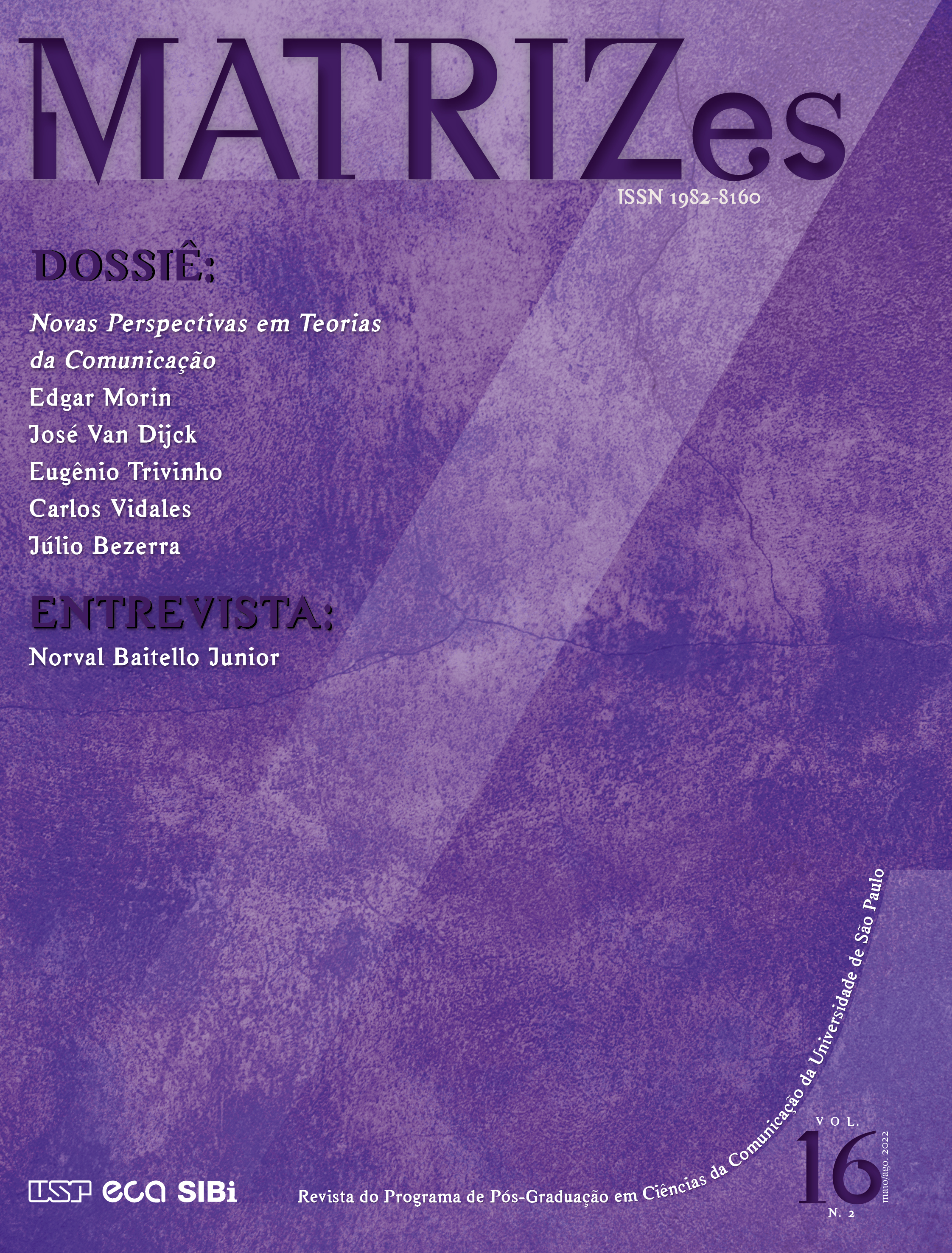Perante o rosto violado: o Mugshot de Bophana e a tragédia do Camboja
DOI:
https://doi.org/10.11606/issn.1982-8160.v16i2p239-260Palavras-chave:
Rithy Panh, Testemunho, Khmer Vermelho, Rosto, VestígioResumo
Um rosto pode ser totalmente aniquilado? Com essa provocação, miramos o mugshot de Hout Bophana, fio condutor deste texto. O ensaio tenta refletir sobre o testemunho vestigial de seu rosto a partir de conceitos filosóficos presentes em Lévinas e Butler, visando uma política das imagens, especialmente daquelas que expõem rostos e corpos vitimados por violências. Também buscamos compreender o método do cineasta Rithy Panh, que, motivado por essa fotografia, realizou um importante documentário sobre a memória do genocídio cambojano. Ao fazer das imagens de arquivo do extermínio uma espécie de lápide para os mortos, o método de Panh também se avizinha do gesto epistolar presente na eliminação de Bophana e de seu esposo, Ly Sitha.
Downloads
Referências
Barthes, R. (1997). A câmara clara. Nova Fronteira.
Becker, E. (1986). When the war was over: The voices of Cambodia’s revolution and its people. Simon & Schuster.
Becker, E. (2010). Bophana: Love in the time of the Khmer Rouge. Cambodia Daily Press.
Benjamin, W. (1985). Origine du drame baroque allemand. Flammarion.
Benjamin, W. (2007). Passagens. Editora UFMG; Imprensa Oficial de São Paulo.
Butler, J. (2015). Relatar a si mesmo. Autêntica.
Butler, J. (2017). Caminhos divergentes: Judaicidade e crítica do sionismo. Boitempo.
Comolli, J.-L. (1995). Mon ennemi préféré. Images Documentaires, (23), 45-56. https://www.imagesdocumentaires.fr/Filmer-l-ennemi.html
Derrida, J. (2000). Poetics and politics of witnessing. In M. P. Clark (Org.), Revenge of the aesthetic (pp. 180-206). University of California Press.
Derrida, J. (2003). Schibboleth. Para Paul Celan. Editora Nacional.
Didi-Huberman, G. (2003). Images malgré tout. Éditions de Minuit.
Ginzburg, C. (2008). Indicios. Raíces de un paradigma de inferencias indiciales. In C. Ginzburg, Mitos, emblemas, indicios. Morfologia e historia (pp. 185-239). Gedisa.
Hirsch, M. (2012). The generation of postmemory: Writing and visual culture after the Holocaust. Columbia Press University.
Leandro, A. (2016). A história na primeira pessoa: Em torno do método de Rithy Panh. E-Compós,
Lessa Filho, R., & Vieira, F. (2020). Entre travessias e escuridão: Notas sobre os espectros (i)migrantes em Border. LOGOS, 27(1), 134-151. https://bit.ly/3PhFJTB
Lessa Filho, R., & Marques, A. C. S. (2022). Flutuar entre as imagens: Purple sea e as vidas migrantes à deriva. DOC On-line,(31), 5-30. https://bit.ly/3P9dCWK
Lévinas, E. (1980). Totalidade e infinito. E d i ç õ e s 7 0 . (Trabalho original publicado em 1961)
Lévinas, E. (1993). Humanismo do outro homem. Vozes.
Panh, R. (2004). Bophana: A Cambodian tragedy. Mãnoa, 16(1), 108-126.
Panh, R. (Diretor). (1996). Bophana : une tragédie cambodgienne [Bophana, uma tragédia cambojana] [Filme]. CDP; INA; France 3.
Panh, R. (Diretor). (2003). S21 – la machine de mort khmère rouge [S21 – A máquina da morte do Khmer Vermelho] [Filme]. Art France Cinema; CNC; Ceská Televize.
Panh, R. (Diretor). (2011). Duch, le maître des forges de l’enfer [Duch, o mestre das forjas do inferno] [Filme]. Angoa; Bophana Production; CDP.
Panh, R., & Bataille, C. (2013). La eliminación. Anagrama.
Pasolini, P. P. (1976). L’Expérience hérétique. Payot.
Sánchez-Biosca, V. (2015). ¿Qué espera de mí esa foto? La perpetrator image de Bophana y su contracampo. Iconografías del genocidio camboyano. Aniki, 2(2), 322-348. https://doi.org/10.14591/aniki.v2n2.170
Sánchez-Biosca, V. (2017). Miradas criminales, ojos de víctima. Prometeo.
Sánchez-Biosca, V. (2019). Elogio de la sonrisa. In A. Ferrer & V. Sánchez-Biosca (Orgs.), El infierno de los perpetradores (pp. 297-337). Bellaterra.
Vieira, F., & Lessa Filho, R. (2019). Da lágrima à resistência: O clamor ético das vítimas e a potência política do rosto como imagem. Doc On-line, (25), 64-81. https://doi.org/10.20287/doc.d25.dt03
Downloads
Publicado
Edição
Seção
Licença
Copyright (c) 2022 Ricardo Lessa Filho, Frederico Vieira

Este trabalho está licenciado sob uma licença Creative Commons Attribution-NonCommercial-ShareAlike 4.0 International License.
Autores que publicam nesta revista concordam com os seguintes termos:
- Autores mantêm os direitos autorais e concedem à revista o direito de primeira publicação, com o trabalho simultaneamente licenciado sob a Licença Creative Commons Attribution (CC BY-NC-SA 4.0) que permite o compartilhamento do trabalho com reconhecimento da autoria e publicação inicial nesta revista para fins não comerciais.
- Autores têm autorização para assumir contratos adicionais separadamente, para distribuição não-exclusiva da versão do trabalho publicada nesta revista (ex.: publicar em repositório institucional ou como capítulo de livro), com reconhecimento de autoria e publicação inicial nesta revista.























